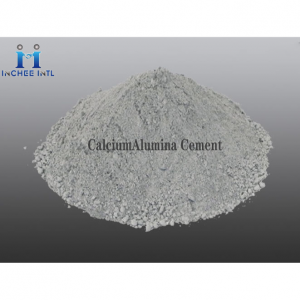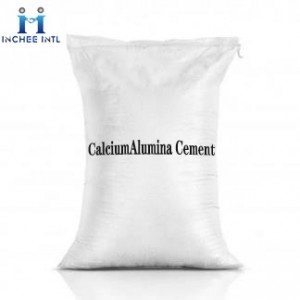Calcium Alumina Cement: The Powerful Bonding Agent for Your Industrial Needs
When it comes to cementing materials, Calcium Alumina Cement (CAC) stands out as a reliable and efficient option. Made from a blend of bauxite, limestone, and calcined clinker with calcium aluminate as the main component, this hydraulic cementing material offers remarkable strength and versatility. Its alumina content of about 50% gives it exceptional binding properties, making it an indispensable choice in various industries.
Brief introduction:
CAC, also known as aluminate cement, is available in different shades, ranging from yellow and brown to gray. This diversity in color allows for flexibility in its application, as it can blend seamlessly with different materials and surfaces. Whether you’re working on metallurgy, petrochemical, or cement industry kilns, Calcium Alumina Cement proves to be the ideal bonding agent.
Advantage:
One of the key benefits of Calcium Alumina Cement is its extraordinary strength. Its unique composition ensures a fast and effective curing process, enabling you to achieve durable results in a short amount of time. Whether you’re constructing industrial facilities or repairing existing structures, CAC’s powerful bonding properties guarantee long-lasting and reliable connections.
In addition to its strength, CAC also boasts excellent resistance to high temperatures, making it highly suitable for applications in kilns and furnaces. Its ability to withstand extreme heat ensures that your construction or repair projects remain intact even in the harshest of conditions. This feature is particularly beneficial in industries where thermal stability is vital for operational efficiency and safety.
Furthermore, Calcium Alumina Cement offers exceptional chemical resistance, making it an ideal choice for environments that involve exposure to corrosive substances or aggressive agents. Its robust composition prevents deterioration caused by chemical reactions, ensuring the integrity and longevity of your installations. This feature is particularly crucial in industries where maintaining the structural integrity of equipment and facilities is of utmost importance.
Considering the competitive landscape of industrial sectors, efficiency and productivity are crucial for success. Calcium Alumina Cement provides an advantage in this regard as well. Its fast-setting properties and high early strength development significantly reduce construction time and enhance project timelines. By using CAC, you can save valuable time and resources while ensuring top-quality results.
Feature:
CalciumAlumina Cementsets quickly. 1d strength can reach more than 80% of the highest strength, mainly used for urgent projects, such as national defense, roads and special repair projects.
The hydration heat of CalciumAlumina Cementis large and the heat release is concentrated. The hydration heat released in 1d is 70% to 80% of the total, so that the internal temperature of the concrete rises higher, even if the construction at -10 ° C, CalciumAlumina Cementcan quickly set and harden, and can be used for winter construction projects.
Under ordinary hardening conditions, CalciumAlumina Cementhas strong sulfate corrosion resistance because it does not contain tricalcium aluminate and calcium hydroxide, and has high density.
CalciumAlumina Cementhas high heat resistance. Such as the use of refractory coarse aggregate (such as chromite, etc.) can be made of heat resistant concrete with a temperature of 1300 ~ 1400℃.
However, the long-term strength and other properties of CalciumAlumina Cementhave a trend of reduction, the long-term strength is reduced by about 40% to 50%, so the CalciumAlumina Cementis not suitable for long-term load-bearing structures and projects in high temperature and high humidity environment, it is only suitable for emergency military engineering (building roads, Bridges), repair works (plugging, etc.), temporary projects, and the preparation of heat-resistant concrete.
In addition, the mixing of CalciumAlumina Cementwith Portland cement or lime not only produces flash solidification, but also causes the concrete to crack and even destroy due to the formation of highly alkaline hydrated calcium aluminate. Therefore, in addition to mixing with lime or Portland cement during construction, it should not be used in contact with unhardened Portland cement.
In conclusion, Calcium Alumina Cement offers a combination of strength, versatility, and resilience, making it the go-to choice for industrial bonding needs. Whether you’re involved in metallurgy, petrochemicals, or cement production, CAC guarantees exceptional results. Its fast-setting properties, high early strength, and resistance to high temperatures and chemicals make it a valuable asset in any project. Choose Calcium Alumina Cement for powerful and reliable bonding solutions that stand the test of time.
Post time: Jul-24-2023








